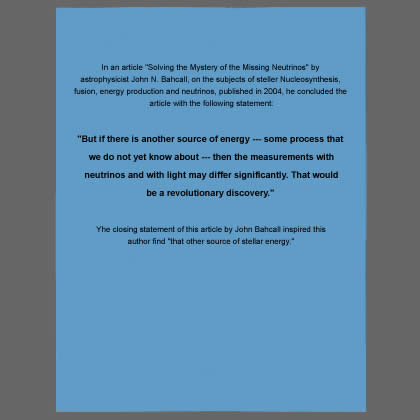Description
There is a critical absence of physical evidence supporting the stellar nucleosynthesis model, with specific reference to the fusion of hydrogen protons into helium. Much of modern physics theory is either based upon this model or is unavoidably intertwined with it. In an attempt to prove that the formation of helium nuclei and the energy emitted from the Sun are the products of stellar fusion, a study of the reverse of fusion was undertaken. Since the fusion of two or more protons cannot be observed directly, it was necessary to examine the methods by which the nuclei of 2753 unstable isotopes break apart (fission) or transition (decay) into different nuclei by natural means. The study, which spanned many years, provided much new information about the nucleus and nuclear physics.
However, the isotope research revealed that not a single event of fusion between protons takes place in a star or elsewhere in the Universe. With the organization of the new data, the evidence showed that four protons cannot be fused, forced, compressed nor accelerated and collided into a stable bound state such as a helium nucleus. And without this nucleus, nucleosynthesis cannot proceed to the next phase identified as the CNO cycle. Furthermore, even if such a fusion event occurred between two or more protons, it would consume more energy than could be produced by it. The chemical elements, their common isotopes and the emitted stellar energy are in fact produced differently from that described by the contemporary nuclear and stellar models. This writing describes the findings of the research that includes the systems by which the elements are formed and stellar energy is produced.





Reviews
There are no reviews yet.